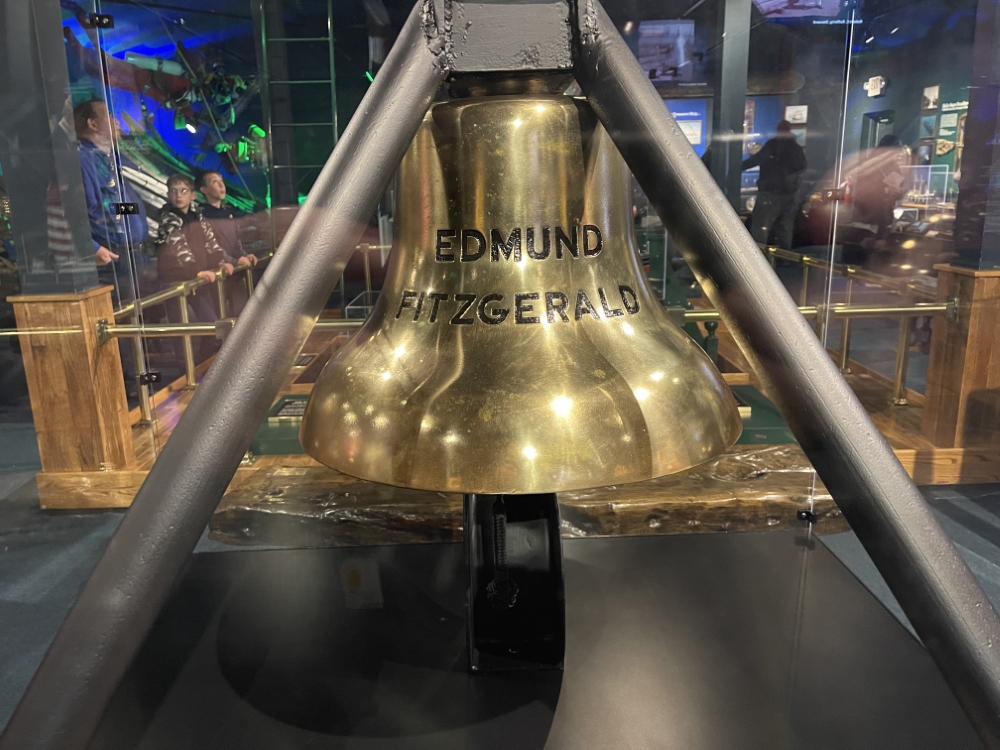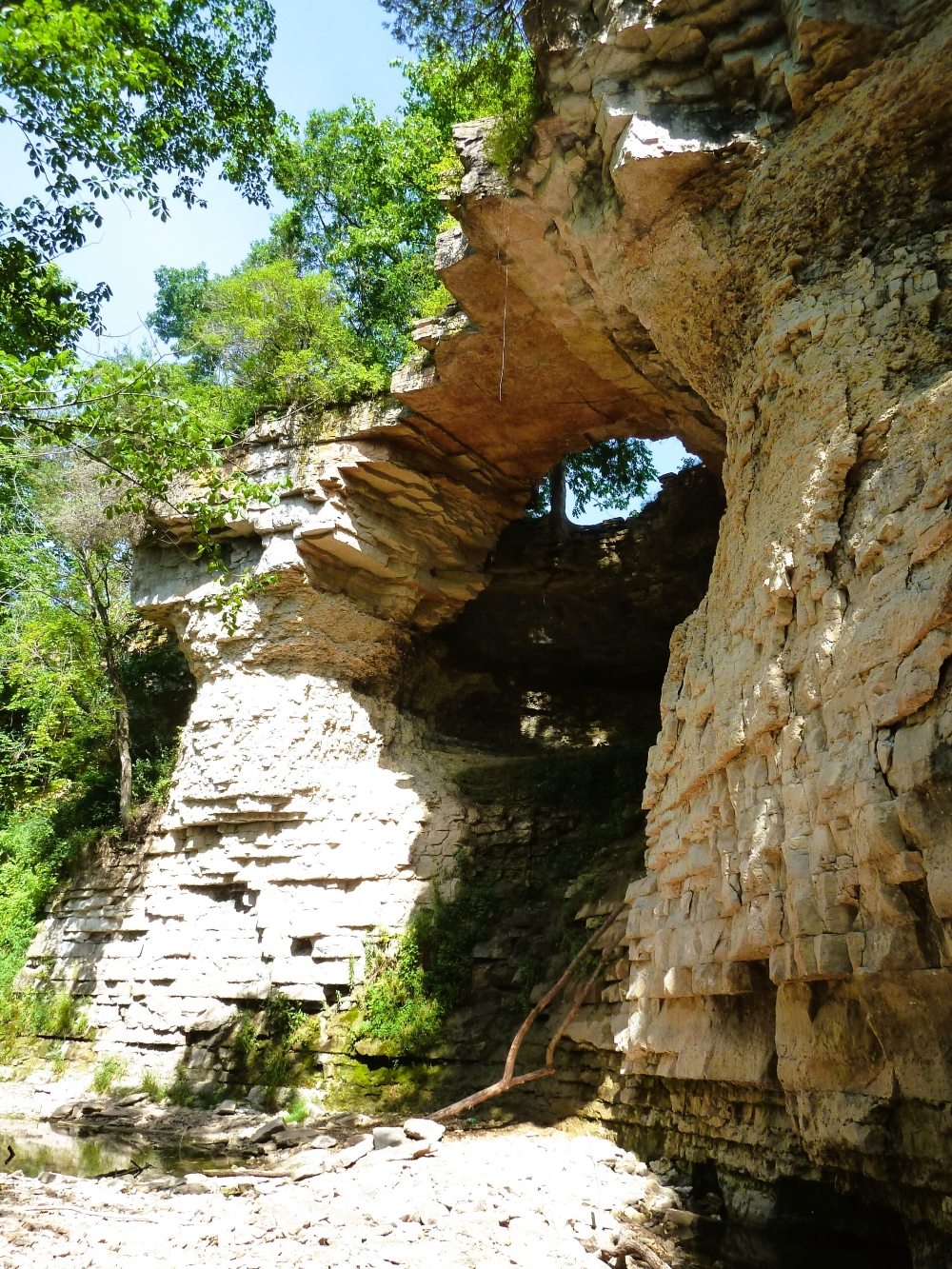Bluffs, trails and historic lighthouses deliver a memorable experience to visitors.
The draw of the Great Lakes is growing, with every state and province bordering the five lakes experiencing record-breaking tourism numbers. Michigan welcomed 128 million visitors and pocketed $29.3 billion in tourism dollars; Wisconsin saw 114 million tourists and $25.8 billion. Carving its way from southern Lake Ontario to the western side of Lake Michigan, the Niagara Escarpment has the oldest forest ecosystem and trees in eastern North America and woos hikers and adventure lovers with its abundance of trails and natural resources. And for marine and history enthusiasts, Whitefish Point in Michigan’s upper peninsula is home to the Great Lakes Shipwreck Museum and the oldest operating lighthouse on Lake Superior.
Can You Find the Slope?
Spanning about 1,000 miles and about 430 million years old, the Niagara Escarpment opens near Lake Ontario and carves out the top line of the Great Lakes Basin through Michigan, Wisconsin and the famous Niagara Falls until it reaches its conclusion in New York State. Eric Fowle, Niagara Escarpment Resource Network founding co-chair and Lakeshore Natural Resource Partnership board member, works diligently on raising awareness of the bounty of geological resources and natural beauty the UNESCO World Biosphere Reserve has to offer anyone seeking adventure in the great outdoors.
“It’s really globally unique — the existence of that feature, the way it was formed, the size,” says Fowle. “And the scale of it, which basically geologically represents the outer edge of the Michigan Basin, and creates environments and habitats that are globally unique and have globally unique species.”

Rock Island, Wisconsin, is located in the Door Peninsula.
Photo courtesy of Eric Fowle
Viewed on a map, the 1,000-mile stretch of the escarpment, coined the “Great Arc,” forms a central spine through the Great Lakes as it arcs through the region. In Wisconsin, the Niagara Escarpment Corridor spans about 230 miles and has the Horicon Marsh (a National Wildlife Refuge), seven state parks and forests (Kettle Moraine Forest, High Cliff, Potawatomi, Peninsula, Whitefish Dunes, Newport, Rock Island), 25 Designated State Natural Areas, 12 county parks, over 30 local parks, one National Trail (Ice Age Scenic Trail) and five state trails (Wild Goose, Eisenbahn, Friendship, Fox River, Ahnapee). Peninsula and Highcliff are the most visited state parks, with Peninsula State Park boasting trails, overlooks and bluffs and Highcliff marked by its distinctive cliff face exposure trails. In short, there is plenty for nature lovers and adventurers in just this part of the Niagara Escarpment.
“[The Niagara Escarpment has] also since ancient times really served as a natural path because of its size, its scale, its prominence on the landscape,” says Fowle. “There’s no part of the Niagara Escarpment that’s more than 50 miles away from a Great Lake. So again, it kind of serves that central path and spine throughout that system. We’ve been working on just building awareness and education for the last 25 years or so, and we obviously kind of tout that land conservation and economic development can co-exist, and this feature can be leveraged by communities to foster new and existing businesses that are tied to the outdoor economy and the tourism economy.”
The Niagara Escarpment Resource Network has been developing an initiative to create an interpretive signage program that would indicate about 18 or 20 spots along the escarpment where signs can signal to visitors where they are located in proximity to the geologic feature.
“That way people will know and understand when they’re at Peninsula State Park in Door County,” says Fowle. “But they do get off the highway and come to Ledge Park. They’re going to recognize this and see that this is the same feature. […] Many folks don’t realize it’s the same feature as Niagara Falls. We just don’t have billions of gallons of water flowing over us every day.”
In Wisconsin there are dreams of developing an end-to-end hiking trail, not unlike the Bruce Trail in southern Ontario, a 600-mile footpath that follows along the escarpment and challenges hikers who often aim to hike the entire path.
“That trail certainly has a huge economic impact in Southern Ontario, and I’m sure you could find studies that are tied to that, so we’d like to emulate it,” Fowle says. “We would like to eventually work with communities to try and get an end-to-end 200-plus-mile-long trail from the southern end up to the tip of Door County.”
A Safe Harbor
Eleven miles north of Paradise on the upper peninsula of Michigan is Whitefish Point, a cape and entry point in Whitefish Bay on the southeastern side of Lake Superior. The township is known for its historic lighthouse, heavily birded status and affiliated bird observatory, and the Great Lakes Shipwreck Museum.

The Shipwreck Museum and White Point Light in Whitefish Point, Michigan
Photo courtesy of the Shipwreck Museum
Located in Chippewa County, the White Point Light was built in 1849 and is the oldest active navigating beacon in the Upper Peninsula and on Lake Superior. The light tower was added in 1861 during the Lincoln Administration, and the White Point lighthouse was listed on the National Register of Historic Places and as a Michigan State Historic Site in 1973 and 1974, respectively, having helped shepherd voyagers across the unpredictable waves of Lake Superior for over 100 years. The lighthouse is the most eastern point of a stretch of shore in Michigan known as the Shipwreck Coast, where hundreds of ships met their fate before sinking to the bottom of Lake Superior. In the 1980s, the Whitefish Township received assistance from the Great Lakes Shipwreck Historical Society, an endeavor that eventually led to the creation of the Great Lakes Shipwreck Museum that same decade.
Built to honor lost mariners who perished on the Great Lakes, the Shipwreck Museum is one of the top tourist destinations in the Upper Peninsula of Michigan, welcoming approximately 80,000 visitors annually to Whitefish Point.
“People often don’t know what history they will uncover at Whitefish Point,” says Corey Adkins, content and communications director of the Great Lakes Shipwreck Historical Society. “People often walk away from our museum with a sense of wonderment, amazement and curiosity about all the other shipwrecks in the Great Lakes.”

The bell of the SS Edmund Fitzgerald
Photo courtesy of the Shipwreck Museum
The Shipwreck Museum also partners with the Whitefish Point Underwater Preserve, a group that protects and preserves shipwrecks and their artifacts that line nearly 400 miles of land at the bottom of Lake Superior. Several artifacts are housed in the Shipwreck Museum, with the most significant being the bell of the SS Edmund Fitzgerald and a rare and treasured second order Fresnel lens from White Shoal Light, located 20 miles west of the Mackinac Bridge in Lake Michigan. Fresnel lenses were used to focus light beams from lighthouses in the 1800s with the second order of these kinds of lenses designed for the Great Lakes region, seacoasts, islands and smaller bodies of water.
Lost in “a storm no one will forget,” the SS Edmund Fitzgerald was an American freight ship that sank in Lake Superior on November 10, 1975, after leaving the port of Superior in Wisconsin the day before the sinking. All 29 crewmen on board were lost. The tragedy prompted changes in Great Lakes maritime shipping that included mandatory immersion suits, increased inspections of ships and new technologies that aided in the navigation and safety of future courses.

